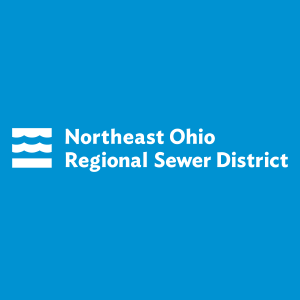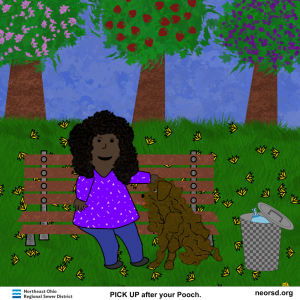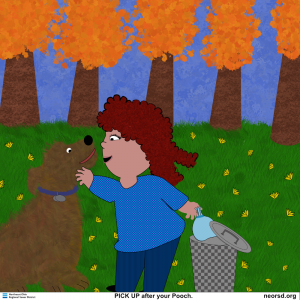Human nature sometimes falls victim to convenience. We use what’s available to us, what we can find at ease. This same idea applies to plastic products. They’re so abundant in the grocery and retail world around us that we turn to plastic water bottles, plastic cups, grocery bags, and more because of the convenience and cheapness. What we fail to acknowledge are the environmental drawbacks plastic use results in that harm a wide variety of life on Earth. But before diving into that, let’s define what plastic even is.
Plastics are man-made materials composed of polymers that are malleable and thus able to compose many different objects (Woodford). Plastics are made from hydrocarbons that are derived from crude oil. This oil is extracted from the Earth and is distilled in an oil refinery. Distillation separates the weighty crude oil into fractions or lighter components of the oil. These fractions are naphtha, the building block of plastics. The next step is polymerization, where gasses like ethane and propane are heated via the process called cracking and become singular molecules known as monomers. Through condensation reactions, these monomers are linked together to become plastic polymers. At this stage, the plastic is in a powdered form and is transformed into a long pipe-like shape through a heated extruder. This pipe-shaped plastic can then be cut into smaller pieces and molded into different products like water bottles and plastic bags (“How Plastics Are Made”; Krosofsky).

When it comes to the harm plastic poses to the environment and wildlife across the globe, it’s important to firstly understand the harm to the world’s oceans. Due to runoff, plastic is ending up in waterways, especially the ocean. Trash composed of plastic water bottles and wrappers is found everywhere “from one of the remotest specks of dirt on the planet, Henderson Island, a tiny uninhabited coral atoll in the middle of the Pacific Ocean (ref), to the deepest spot on Earth, the Mariana Trench (ref), which plummets to a depth of 10,994 meters (36,070 feet) below sea level” (GrrlScientist). These products are mistaken for food by birds and marine wildlife and end up inside their bodies, and as a result, wildlife is killed off, posing a threat to food chains and webs in marine bodies. While marine life is harmed, people often say to just recycle plastic products. However, not all plastic products can be recycled, and even if a plastic product is recycled, it is broken down into smaller pieces that can still be harmful to the environment since animals can still ingest them. Only a small percent of plastics can actually be composted at home or by industrial factories; the rest have a long life span. Once in the ocean, the plastic is almost impossible to retrieve and take out, thus quickening the effects to marine wildlife. When our marine wildlife is harmed, economic systems also falter as coastal cities depend on fish and animals as a food source and also for jobs. In addition, when fish and animals with plastics within their organs are consumed by humans, “ingested microplastic particles can physically damage organs and hazardous leach chemicals—from the hormone-disrupting bisphenol A (BPA) to pesticides—that can compromise immune function and stymie growth and reproduction” (Thompson). Overall, plastic has many harmful effects on the environment and can be toxic to marine life, human life, and economic systems worldwide.
In order to minimize these effects, there are many steps individuals and communities can take to reduce plastic pollution. First off, on an individual level, we can replace the plastic items we use in our day-to-day lives with reusable products like reusable water bottles, compostable utensils, reusable bags, etc. We can also support legislation on both the state and national levels to help reduce plastic pollution, such as the 2021 Break Free From Plastic Pollution Act, that worked at the national level to help decrease plastic pollution. Other local initiatives include helping out at beach and park cleanups, avoiding buying products with microbeads, and donating to reliable organizations that help address plastic pollution, like the Plastic Pollution Coalition or Clean Ocean Project (Hutchinson). All these initiatives and more can help make a significant impact on reducing plastic waste. At the end of the day, this is our planet, our home. If we don’t protect it, who will?
Special thanks to Northeast Ohio Regional Sewer District
Cleveland STEP – Northeast Ohio Regional Sewer District (neorsd.org)
Connect with Northeast Ohio Regional Sewer District on social media
- https://twitter.com/neorsd
- https://www.facebook.com/yoursewerdistrict
- https://www.youtube.com/user/neorsdccr
- https://www.instagram.com/neorsd/
- https://www.pinterest.com/wallywaterdrop/
References
- GrrlScientist. “Five Ways That Plastics Harm the Environment (and One Way They May Help).” Forbes. Forbes Magazine, April 14, 2022. https://www.forbes.com/sites/grrlscientist/2018/04/23/five-ways-that-plastics-harm-the-environment-and-one-way-they-may-help/?sh=4a5a20f967a0.
- “How Plastics Are Made.” Plastics Europe, May 3, 2022. https://plasticseurope.org/plastics-explained/how-plastics-are-made/#:~:text=Plastics%20are%20made%20from%20natural,%2C%20of%20course%2C%20crude%20oil.
- Hutchinson, Brian. “7 Ways to Reduce Ocean Plastic Pollution Today.” Oceanic Society, March 1, 2022. https://www.oceanicsociety.org/resources/7-ways-to-reduce-ocean-plastic-pollution-today/.
- Krosofsky, Andrew. “Plastic: How It’s Made and Why It’s Bad.” Green Matters. Green Matters, August 12, 2021. https://www.greenmatters.com/p/how-plastic-made.
- Thompson, Andrea. “From Fish to Humans, a Microplastic Invasion May Be Taking a Toll.” Scientific American. Scientific American, September 4, 2018. https://www.scientificamerican.com/article/from-fish-to-humans-a-microplastic-invasion-may-be-taking-a-toll/#:~:text=Ingested%20microplastic%20particles%20can%20physically,and%20stymie%20growth%20and%20reproduction.
- Woodford, Chris. “Plastics: A Simple Introduction.” Explain that Stuff, May 16, 2022. https://www.explainthatstuff.com/plastics.html#whpl.
























